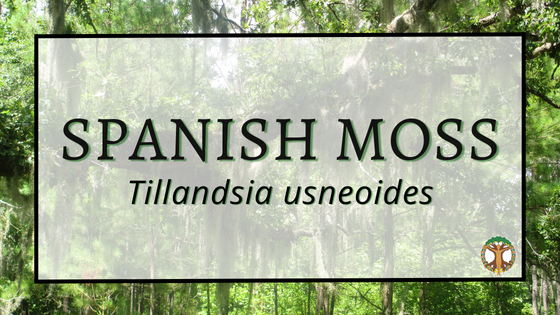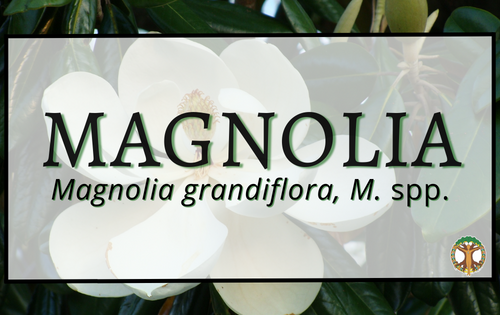
Spanish Moss
Latin Name: Tillandsia usneoides
Family: Bromeliaceae
Spanish moss is best known for its stunning accent to a wooded landscape, but it is neither moss, nor Spanish. Its species name “usneoides” means that it has an appearance like moss – though is not actually a moss, but rather an epiphytic bromeliad, with long threadlike festoons that can grow several feet in length off of tree limbs. It’s genus name is a nod to physician Elias Tillands, who was so afraid of water that he was known to walk several extra miles around a lake rather than take a boat a few hundred feet across.
Contrary to popular belief, Spanish moss is not a parasite and does not actually feed off the tree for nutrients or cause it harm, but simply wraps its wiry tendrils around the tree for support. It doesn’t have roots, but takes in moisture through permeable scales along its leaves. It is commonly found on oak and cypress but can grow on a variety of species, and provides support to a variety of animal species. Birds use the moss for their nests, many insects make their homes inside clumps of it, and snakes and frogs hide within its long tendrils.
It is also not actually from Spain, but is indigenous to Central and South America down to Argentina and Chile, the Caribbean including the Bahamas and West Indies, and throughout the southeastern United States. Its domestic range spans from Texas to Virginia down to Florida, congregating in the most humid regions. It has long been one of the most widely distributed tropical members of the Bromeliad family, and was called ayan’ nanhi’ by the Biloxi tribe of Mississippi, a term that loosely means “tree hair.” French colonizers thought it looked like the long beards of Spanish conquistadors and named it Barbe Espagnol which means “Spanishbeard.” Spaniards, not to be chastised, in turn named the plant Cabello Frances or “French hair.” The French won the cultural name-calling and over time, Spanish beard morphed into Spanish moss.
The plant has a history of use in domestic infrastructure and medicine. It is astringent, containing coumarins and resins. In 1952, an antibacterial compound was identified in Spanish Moss that is moderately effective against Stapholococcus, and in 1953 an estrogenic compound was identified. It remains an important medicine in Mexico, Cuba, Brasil, Argentina, and Peru, and was used historically among folk healers in the Southeast United States, though FDA concerns about potentially toxic compounds have discouraged its frequent use in modern western herbalism. It’s a shame, because the plant is prolific in our region and has established merit as a healing plant.
Spanish Moss has a history of use as a remedy for rheumatism, either taken as a tea, soaking in a bath with the decoction, or having the liquid massaged into sore muscles and joints. It is also a common remedy for hemorrhoids, applied in many countries as a mashed poultice mixed with a fat like butter. It has been used by the Houma of Louisiana as well as more modern Louisiana healers as a diabetes remedy and a decoction for fevers and chills. In South Carolina, folk herbalists use a decoction of the plant as a soak for edema and rheumatic pain. Many historical references point to the use of the green moss in labor, delivery, and as a galactagogue, but the midwives I consulted had not worked with the plant in this way and I recommend caution. It brings a smile to learn that in South Carolina, the green moss is wrapped around the neck to relieve a sprain or strain, and is placed in one’s shoe to alleviate hypertension.
Fresh moss is 67-75% moisture, dried moss 7% protein, 5.5% ash, 46.8% cellulose, vitamin A, carotene, vitamin C. Moss was mixed with clay to construct houses and huts throughout the southern U.S, and the plant yields a wax that can be used for polishing furniture. To this day, it continues to be used in a variety of crafts and fiber arts, and also as a stuffing for upholstery and bedding. Keep in mind if you try your hand at a Spanish moss bed that the plant often harbors redbugs in its natural environment – you can steam, boil, or cook the moss to kill the bugs before rolling around all over the moss bed, but still practice caution during the harvest process. Spanish moss can absorb ten times its dry weight in water. It is also a reliable indicator of metal pollution in an atmosphere – so be discerning about the location from which you wildcraft it.




